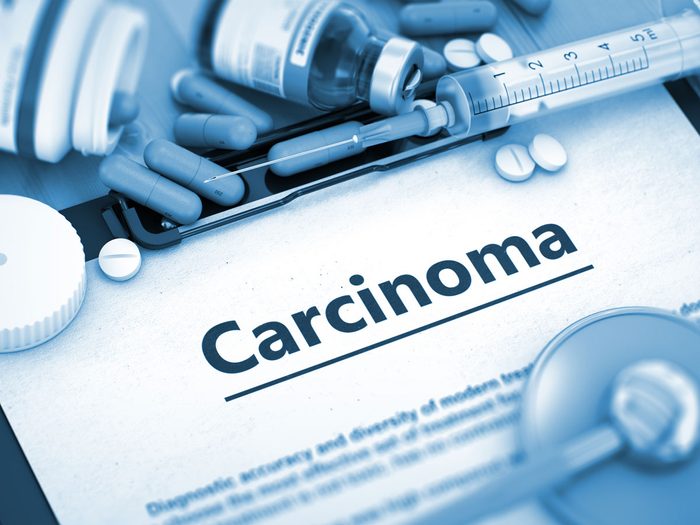
Common types of cancer in Canada
Year over year, cancer (a.k.a. “malignant neoplasms”, a.k.a. “the big c”) continues to be the leading cause of death in Canada. That translates to nearly one in two Canadians who will develop cancer in their lifetime and as many as one in four who will die from it. Every single year, a huge number of patients will undergo surgery, radiation and chemotherapy and even more family members will worry about the future right alongside them. The good news? In the past thirty years, cancer rates have decreased by 32 percent for males and 17 percent for females and we’ve reached the point where more than half (60 percent) of Canadians will survive at least five years beyond their cancer diagnosis—though of course it varies greatly depending on the part of the body first affected. Read ahead to discover the 10 most common types of cancer in Canada, ranked in descending order.
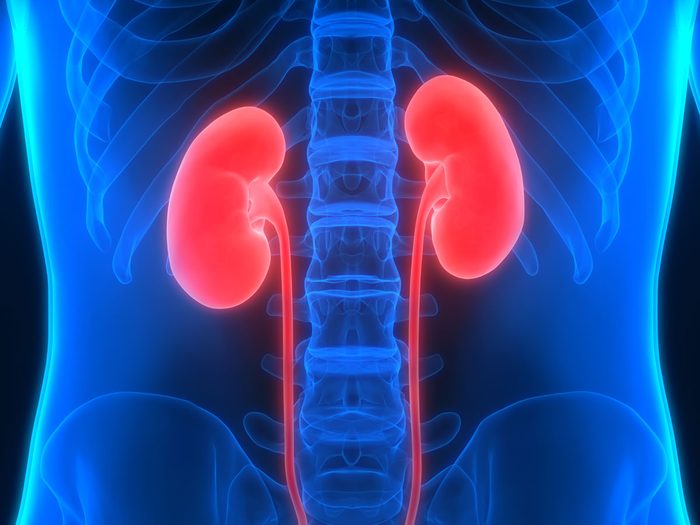
#10. Kidney and renal pelvis
Bean-shaped and the size of fists, the kidneys are located behind the abdominal organs, with one kidney on either side of the spine. The tenth most common organ to be affected by cancer, they’re extremely important for helping your body function properly because they remove wastes and extra fluid, control blood pressure, make red blood cells and keep bones healthy. The renal pelvis is the top part of the ureter (the tube that urine flows through to transfer from the kidneys to the bladder).
5-year survival rate: 67%

#9. Thyroid
The thyroid, which sits below the larynx and has a right and left lobe on either side of the trachea, is a gland that’s part of the endocrine system and is responsible for producing several hormones that control bodily functions. Luckily, the five-year survival rate is nearly 100 percent. Be sure to watch for these often silent signs you could have a thyroid problem.
5-year survival rate: 98%
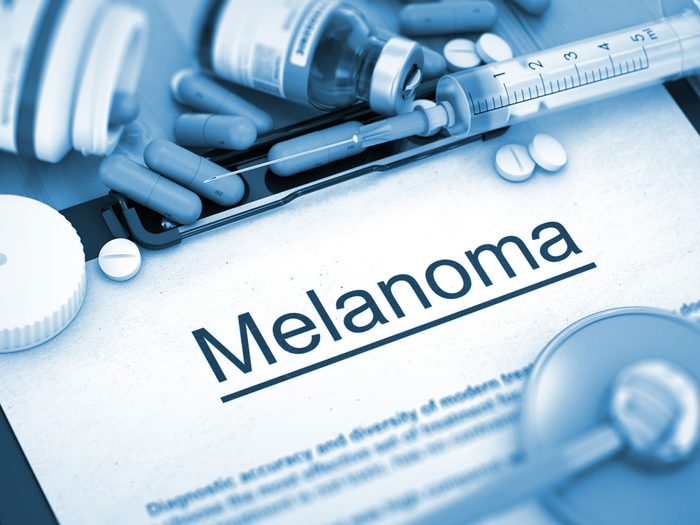
#8. Melanoma
The reason doctors and dermatologists are so preachy about sunscreen? Because a type of skin cancer called melanoma is the eighth most common cancer in Canada. Contact with ultraviolet radiation from the sun or indoor tanning beds is the most significant risk factor for the disease, so using broad-spectrum sunscreen of at least SPF 30 from childhood onward is a key preventative measure. And sunscreen formulas have come a long way in recent years so there’s really no excuse. (Be sure to check out our favourite mineral sunscreen options.)
5-year survival rate: 88%

#7. Uterus
Though survival rates are quite good for uterine cancer, it can be a devastating area to develop a malignant tumour because it’s central to the female reproductive system and any woman’s ability to become pregnant. Some risk factors for uterine cancer include estrogen-only hormone replacement therapy, early menstruation or late menopause (both of which increase total number of periods), never giving birth, being overweight or obese and polycystic ovary syndrome (PCOS).
5-year survival rate: 84%
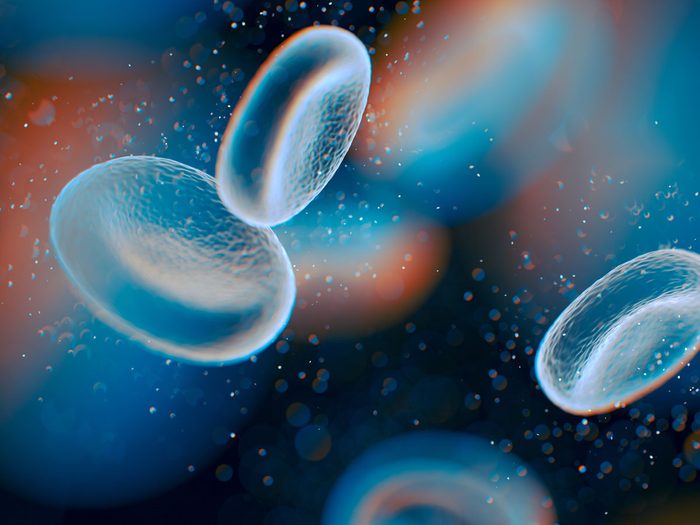
#6. Non-Hodgkin lymphoma
A type of cancer that starts in a subset of white blood cells called lymphocytes, non-Hodgkin lymphoma attacks the immune system, which fights infections. Hodgkin lymphoma varies from non-Hodgkin lymphoma because an abnormal cell, called a Reed-Sternberg cell, is present in the former.
5-year survival rate: 66%

#5. Bladder
The balloon-shaped organ responsible for storing urine before it’s excreted through the urethra, the bladder can be affected by cancer just like any other part of the body. Though early-stage bladder cancer might not cause symptoms, the most common sign is blood in the urine. Other symptoms may include an intense need to urinate or the need to urinate often, trouble urinating or even pain during urination. Before you worry, know that there are other medical reasons for frequent urination. Talk to your doctor if you’re concerned.
5-year survival rate: 73%

#4. Prostate
For Canadian men, prostate cancer is actually the most common type of cancer with 21,700 diagnosed cases in 2017. (It’s the most common cancer for men in all but two Canadian provinces.) It also has one of the highest survival rates following thyroid and testicular cancer. The prostate creates a nourishing prostatic fluid, which merges with sperm to create semen when a man is aroused.
5-year survival rate: 95%
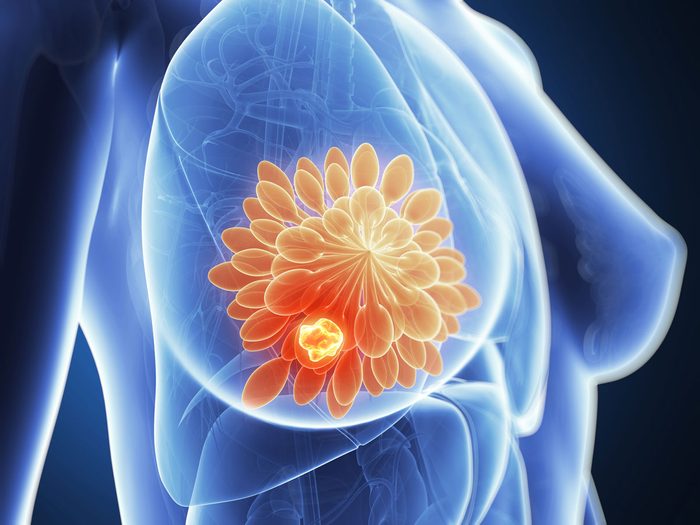
#3. Breast
The most common cancer in Canadian women, breast cancer accounts for 25 percent of all cancers in females—but the mortality rate has decreased at least 44 percent since its peak in 1986. This decline is likely due to two factors: early detection thanks to mammography screening and more effective treatment options. However, women are still missing — or ignoring — some cancer symptoms.
5-year survival rate: 87%

#2. Colorectal
Cancers in the colon and the rectum, both considered part of the large intestine, account for 13 percent of all cancers in Canada. Incidence in the Canadian population has dropped significantly in the past thirty years in older adults—likely thanks to colorectal screening. On the flip side, rates appear to be on the rise in adults younger than 50.
5-year survival rate: 64%
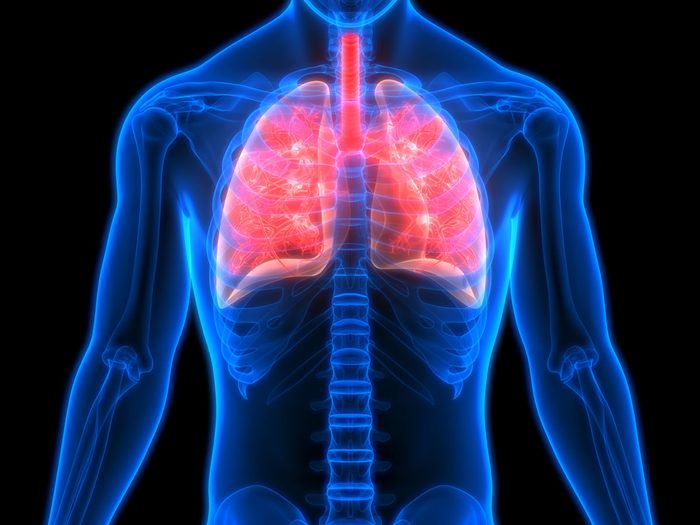
#1. Lung and bronchus
Sadly, the most common type of cancer in Canada is also one of the deadliest. In 2017, approximately 28,600 people were diagnosed with lung or bronchial cancer—which claims the lives of four out of five sufferers in the first five years. That means that in 2017, 21,100 people succumbed to their illness.
5-year survival rate: 17%
Next, read up on these 29 things you think cause cancer, but don’t.
